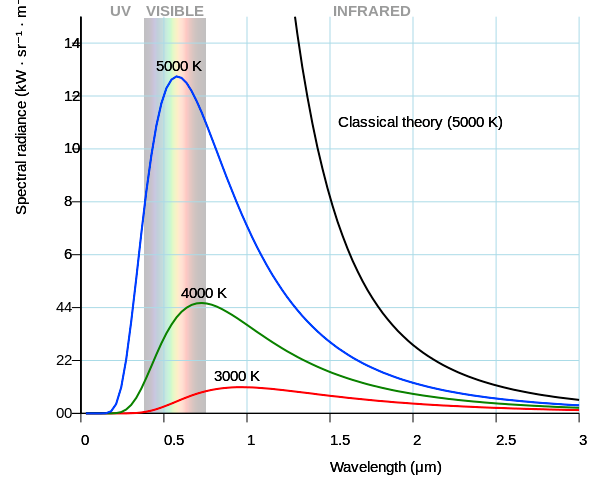

To be fair, W8.1 wasn’t that bad, you could even change the full screen start menu to a regular one. W10 was better though. W11 is… well they fixed the most glaring issues over the last year but I still can’t get over the crippled start menu.


To be fair, W8.1 wasn’t that bad, you could even change the full screen start menu to a regular one. W10 was better though. W11 is… well they fixed the most glaring issues over the last year but I still can’t get over the crippled start menu.


Right? SATA III SSDs currently cost the same as HDDs of the same capacity, at least where I live. If it stays like that, it will no longer make any sense to buy HDDs. Finally.
I still remember buying my first SSD some 10 years ago which at the time cost 20 times more per GB of what it costs now.


All those movies will be lost in time, like tears in rain…


I have a perfectly functioning PC (that will very likely be still perfectly usable by 2025) that cannot be upgraded to Win 11 because MS has for some strange reason put quite harsh but completely artificial hardware requirements on W11 that only CPUs manufactured in the last 3-4 years meet. And before you say “You can switch to Linux”, no I can’t. Not with the software I use for work. And then there’s gaming of course…
(Now, I bought a new PC recently, so I’m fine for the foreseeable future but not everyone can either afford it or simply feels the need to upgrade their computer)


Have you ever had a dream that you, you had, your, you could, you’ll do, you wants, you could do so, you’ll do, you could, you want, you want him to do you so much you could do anything?


I mean, I might have considered paying for YT premium if I thought it offered some value (other than disabling ads) but I won’t sure as hell pay for anything that any company is trying to blackmail me into.


There are obviously also extensions/userscripts that do that for you and convert all shorts into regular videos.
France is bacon.


Yesterday was the first time videos actually stopped working for me. I updated uBlock Origin and it’s been working again. YouTube can’t win this race. (Unless they completely cripple their website and make it only available to logged in verified users or something.)


Man, those were the times… Borrowing hard drives from friends, burning CDs, sharing lists of who has what…


What’s a good alternative?
I haven’t used any such tool for almost a decade probably and I don’t think there’s a need to nowadays. Occasionally I run the Windows Disk Cleanup utility to get rid of temp files and Windows Update installation files and that’s about it. Cleaning the registry is bullshit anyway that does more harm than good (doesn’t speed up anything certainly).
Seems you didn’t get my point:
Says the diagram in the OP, the EM spectrum of a 5800K star, which clearly shows a peak within the visible spectrum in the blue band, and a significant (25% or so) drop off by the time it gets to the red band. Those aren’t relatively equal.
Then show me an EM spectrum of this mythical “white light” temperature. No matter what temperature you choose, they all have different drop-offs at different frequencies, look again at this graph I linked to before:

The function isn’t even symmetrical, so even if you chose one with the peak in the very middle of the visible spectrum, you’d still get different drop-offs in the blue band and in the red band. So how do you choose which temperature is this perfect white? I’ll tell you how you did, you just chose one that looked white to you. You don’t like 5800K because it looks blue to you. But it only looks blue in certain context! And there’s more, did you know that at lower luminance level, your neutral white will seem more blue?.
Additionally, you don’t need the full continuous spectrum to produce the “same” white. You can just combine single RGB wavelengths to get white for example. In fact, that’s exactly what we’re talking about as we’re presumably both looking at the image on RGB screens. But you run into the same problem, because there’s no single definition of what exact wavelength red, green or blue is, nor what their relative power should be to produce “neutral” white. But of course this “RGB white” only looks white to humans, some animals would see a different color from the full spectral white.
I am talking about what color it is
But color is perception and only that. You can talk about temperatures and wavelengths but from a physics point of view they’re just that - temperatures and wavelengths, not colors! When you go shopping for a laser, you buy a 450 nm or 473 nm or 488 nm laser. You don’t buy “blue laser” because all these three numbers are “blue”.
Color (American English) or colour (Commonwealth English) is the visual perception based on the electromagnetic spectrum. Though color is not an inherent property of matter, color perception is related to an object’s light absorption, reflection, emission spectra and interference.
(…)
Most light sources emit light at many different wavelengths; a source’s spectrum is a distribution giving its intensity at each wavelength. Although the spectrum of light arriving at the eye from a given direction determines the color sensation in that direction, there are many more possible spectral combinations than color sensations. In fact, one may formally define a color as a class of spectra that give rise to the same color sensation, although such classes would vary widely among different species, and to a lesser extent among individuals within the same species. In each such class, the members are called metamers of the color in question. This effect can be visualized by comparing the light sources’ spectral power distributions and the resulting colors.
5800K is not white…
Says who?
…(relatively equal amounts of all visible light wavelengths)
That’s the keypoint, relatively equal. You’re comparing black-body radiation temperatures but at no temperature is the spectrum actually constant across the frequencies which we call visible light. So which temperature you choose to call “white” is up to how you decide to define it. And because our eyes have different sensitivity for different frequencies, I doubt that even if you produced a perfectly constant spectral power distribution of visible light, that you would perceive it the same as what you call white on the diagram. Not to mention such a light source could be harder to find than you might think.
If you don’t believe me, you can start on Wikipedia and from there go down the rabbit hole that colors and color perception are.
(…)
A range of spectral distributions of light sources can be perceived as white—there is no single, unique specification of “white light”. For example, when buying a “white” light bulb, one might buy one labeled 2700K, 6000K, etc., which produce light having very different spectral distributions, and yet this will not prevent the user from identifying the color of objects that those light bulbs illuminate.[30]
Interestingly, you can define what a perfectly white object is, with the caveat that what frequencies in what ratio actually hit your retina is again dependent on the light source.
Color vision allows us to distinguish different objects by their color. In order to do so, color constancy can keep the perceived color of an object relatively unchanged when the illumination changes among various broad (whitish) spectral distributions of light.[30]
The same principle is used in photography and cinematography where the choice of white point determines a transformation of all other color stimuli. Changes in or manipulation of the white point can be used to explain some optical illusions such as The dress.
While there is no single, unique specification of “white light”, there is indeed a unique specification of “white object”, or, more specifically, “white surface”. A perfectly white surface diffusely reflects (scatters) all visible light that strikes it, without absorbing any, irrespective of the light’s wavelength or spectral distribution.
It’s called white, but you can see it’s pretty clearly blue
It’s more complicated than that. “White” is a completely made up term, it has no physical basis. Colors are a perception, they’re not physically real. We just gave labels to some frequencies of the electromagnetic spectrum and their different combinations. And just like a camera, the human brain uses white balance correction to compensate for the fact that in different times of the day, the sunlight reaching us here on Earth has different color temperature (because it travels through different thickness of atmosphere), and by extent to compensate for different color of artificial lighting. So what our brain perceives as “white” is much dependent on context. It’s how the infamous white+gold/blue+black dress illusion works. It’s why when you put on ski goggles with orange lenses, the snow looks yellow at first but becomes “white” after a while. Then you take them off and the snow becomes momentarily blueish before it balances to white again. You can also force yourself to have the white balance temporarily out of sync in each eye.
If you printed out your chart and looked at it at different times of day or under different lighting conditions, what you’d think as neutral white would change too. So you can’t really say which white is the “true white”, it’s all relative.


I already got permabanned from reddit for saying “cunt” so fuck that cunt website.



Aren’t rockets vehicles that ride on fire (that they create themselves)?


I’m already quite content, if I know upfront that our customer’s goal does not violate the laws of physics.
Haha, this is so true and I don’t even work in IT. For me there’s bonus points if the customer’s initial idea is solvable within Euclidean geometry.


Is it… vore but… upwards? So… vomiting people? Nah, I don’t want to know either.
I’m not talking about taskbar, I’m talking about start menu. You can change the position of the start button back to the left, which was the first thing I of course did, but you can’t do anything about the start menu itself (at least without using 3rd party solutions which I generally try to avoid, not to mention they’re usually not free, unless there’s some secret that you know I’m unaware of). You can’t change the menu’s tiny size, not have the icons categorized, grouped, in different sizes with irregular placement, live tiles… You also can’t drag and drop the icon onto desktop to create a shortcut there (nor is there such option in the context menu). I really liked the W10 start menu.